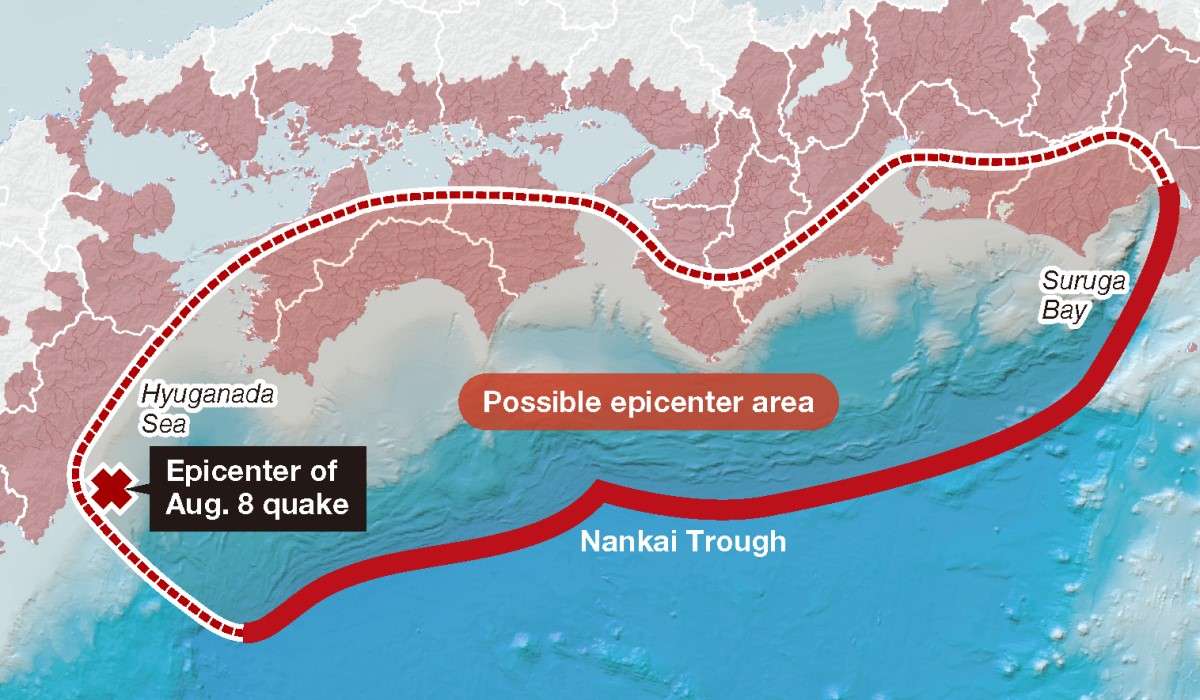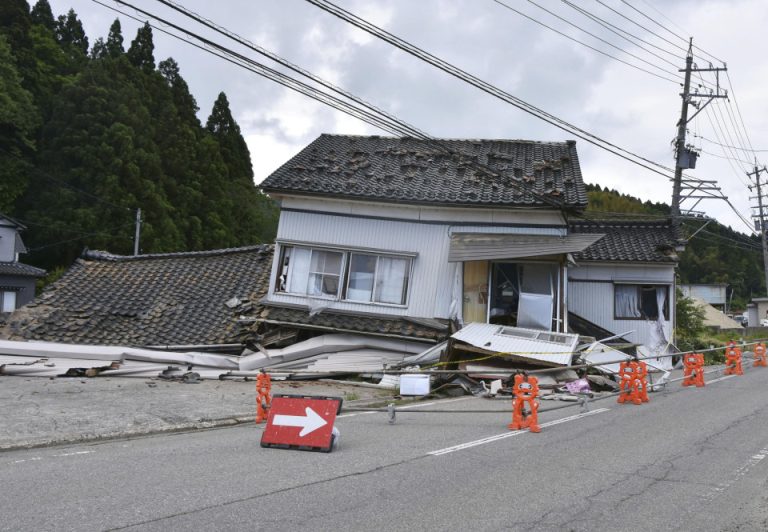Japan Earthquake Nankai Trough: Mega Earthquake Shakes Japan

On August 8, 2024, a powerful 7.1-magnitude earthquake struck off the southeastern coast of Japan’s southern main island of Kyushu. This significant seismic event has raised concerns about the potential for an even larger earthquake also along the Nankai Trough, a notorious underwater subduction zone.
The Nankai Trough
The Nankai Trough is an undersea trench that stretches approximately 800 kilometers (500 miles) along Japan’s Pacific coast, from Hyuganada near Kyushu to Suruga Bay in central Japan. This region is known for its seismic activity, where the Philippine Sea Plate subducts beneath the Eurasian Plate, also occasionally causing massive earthquakes and tsunamis2.
Megaquake Advisory
Following the 7.1-magnitude quake, the Japan Meteorological Agency (JMA) issued its first-ever “megaquake advisory.” This advisory indicates an increased likelihood of a larger earthquake, potentially also reaching magnitudes of 8 or 9, within the Nankai Trough2. The advisory has caused widespread concern and also confusion among residents, as it highlights the heightened risk without specifying a precise time or location for the potential megaquake2.

History
The Nankai Trough has a history of producing devastating earthquakes. The last significant events occurred in 1944 and 1946, with magnitudes of 8.0 and 8.1, respectively. These quakes caused extensive damage and loss of life. Experts estimate a 70-80% chance of another major earthquake occurring in this region within the next 30 years2.
Government Response
In response to the advisory, Japanese Prime Minister Fumio Kishida canceled his planned trip to Central Asia. To lead the government’s emergency response efforts. The government is focusing on preventive measures, public communication. And also ensuring that residents are prepared for potential aftershocks and also future seismic events2.
Public Reaction
The advisory has left many Japanese residents feeling anxious and uncertain.


